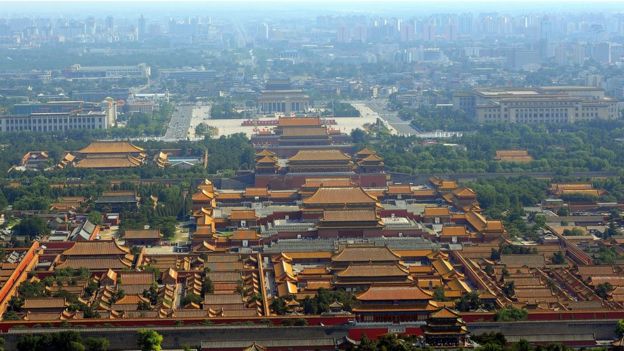When I first came to Beijing in the early 1980s, the city felt dusty overall--a one-time capital of temples and palaces was transformed into a landscape of factories and chimneys, and people rode simple steel bicycles or diesel-belching buses through the windy old streets. This was my initial impression of this capital city.
上世紀八十年代初我初來北京的時候,感覺這里到處塵土飛揚—這座廟宇和宮殿曾經隨處可見的古都冒出了很多工廠和煙囪,人們騎著簡易的鋼架自行車或者乘坐噴著濃煙的柴油公交車在刮著大風的古老街道上穿行—這就是當年我對北京的最初印象。
Leafing through old photo albums, I can still sense the taste unique to old Beijing. Its streets, walls, temples, gardens and alleys were part of a carefully woven tapestry that reflected the constellations above and geomantic forces below. It epitomized the political-religious system that ran traditional China for millennia. It was Chinese belief incarnate.
如今翻看當年的老照片,依然可以感受到老北京特有的味道:街道、高墻、寺院、園林和小巷共同構成了一幅精心編織的掛毯,映襯出天上的星宿與地上的風水。這是傳統中國幾千年來實行的政教體系的縮影,曾是中國人信仰的塵俗體現。
Sadly, its great city walls and many of its temples and distinctive alleys, or hutong, were destroyed to make way for aggressive industrialization. The 1980s brought economic reforms and unregulated real estate development, which wiped out almost all of the rest of the old town. Like many people who have fallen in love with this city, I was disheartened and felt Beijing’s culture was lost. But in recent years I have come to realize that Beijing’s culture is not dead; it is being reborn in odd corners of the city and in unexpected ways. It is not the same as the past, but vibrant still.
可惜后來為了大力推行工業化建設,北京城內宏偉的城墻、大量的寺廟乃至獨特的胡同都遭到損毀。隨著八十年代推行的經濟改革和房地產行業的無序野蠻開發,殘余的舊城區風貌幾乎消失殆盡。像許多愛上這個城市的人一樣,我感到沮喪,覺得北京的文化已經失落了。但是最近幾年,我開始2018/10/29注意到:北京的文化并沒有消亡,而是在城市的偏僻角落里,以意想不到的方式得以重生。此時的文化已然異于彼時的文化,但仍然充滿活力。











